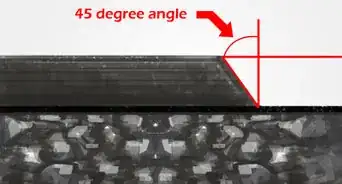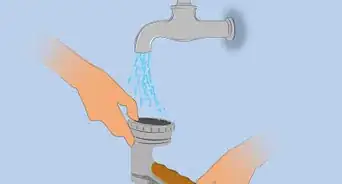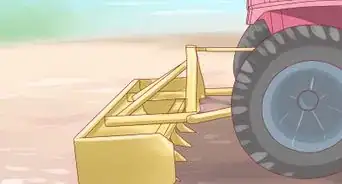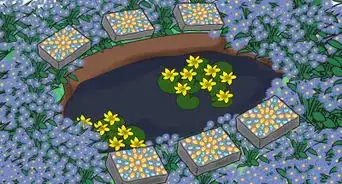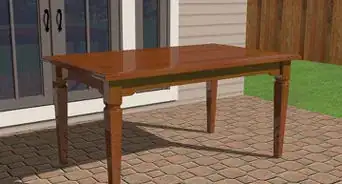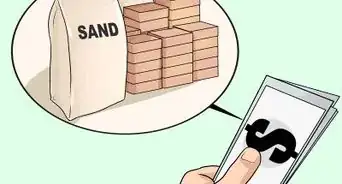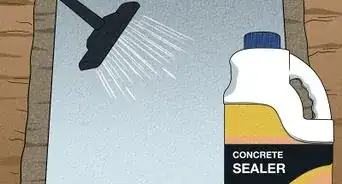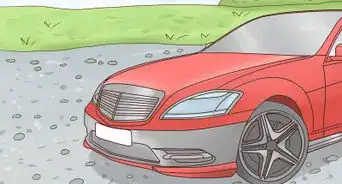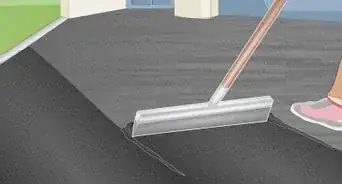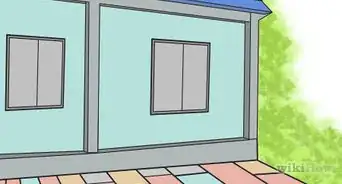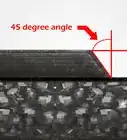This article was co-authored by Sina Kamran. Sina Kamran is a Hardscaping Specialist and the Owner of Design Scapes, Inc. in Santa Monica, California. With over 15 years of experience, he specializes in customized, site-specific hardscaping and landscaping design/build projects. He's a certified National Concrete Masonry Association (NCMA) designer, a certified installer with the Interlocking Concrete Pavement Institute (ICPI), and a Rain Bird Certified Irrigation Professional. Additionally, Design Scapes, Inc. has many 5-star rated reviews.
This article has been viewed 62,912 times.
A gravel path can be a visually appealing component to your garden, as well as being environmentally friendly and easy to maintain. Following a few easy steps, you can add a path to your own garden.
Steps
-
1Plan out your path, using chalk spray or another temporary marker. [1]
- First, plan out the basic route of your path.
- Next, use measuring tools to mark out an even width along your route.
- Double check to make sure there is no delicate plumbing or wiring along your intended route!
-
2Measure the area of your intended path so you'll know how much gravel to purchase.[2] You will want your path to be covered by at least an inch and a half (3 cm) of gravel.Advertisement
-
3Pick your gravel.[3] Choose a color and texture that is appropriate to your yard design, needs, and budget.
-
4Dig a trench about 2 inches deep. The edges of the trench will be flush with the outlined edges of your path.
-
5Line your trench with landscape fabric [4] or two layers of burlap or newspaper to smother weeds, but allow drainage.
-
6Edge your trench with rocks or bricks to contain the gravel.
-
7Add your gravel,[5]
raking it evenly over your path.
Expert Q&A
-
QuestionCan you make a steep gravel path?
 Sina KamranSina Kamran is a Hardscaping Specialist and the Owner of Design Scapes, Inc. in Santa Monica, California. With over 15 years of experience, he specializes in customized, site-specific hardscaping and landscaping design/build projects. He's a certified National Concrete Masonry Association (NCMA) designer, a certified installer with the Interlocking Concrete Pavement Institute (ICPI), and a Rain Bird Certified Irrigation Professional. Additionally, Design Scapes, Inc. has many 5-star rated reviews.
Sina KamranSina Kamran is a Hardscaping Specialist and the Owner of Design Scapes, Inc. in Santa Monica, California. With over 15 years of experience, he specializes in customized, site-specific hardscaping and landscaping design/build projects. He's a certified National Concrete Masonry Association (NCMA) designer, a certified installer with the Interlocking Concrete Pavement Institute (ICPI), and a Rain Bird Certified Irrigation Professional. Additionally, Design Scapes, Inc. has many 5-star rated reviews.
Hardscape Specialist Only if you have a system like a honeycomb grid, which is plastic and supposed to hold the gravel in place. Otherwise, you'll just have a lot of gravel coming loose and getting all over the place.
Only if you have a system like a honeycomb grid, which is plastic and supposed to hold the gravel in place. Otherwise, you'll just have a lot of gravel coming loose and getting all over the place.
Expert Interview

Thanks for reading our article! If you'd like to learn more about landscaping, check out our in-depth interview with Sina Kamran.
References
- ↑ https://www.youtube.com/watch?v=SCdWi8eAR5U
- ↑ https://decorativeaggregates.com/pages/gravel-calculator
- ↑ https://www.buriensandandgravel.com/50-shades-of-gray-choosing-the-right-gravel-for-the-right-project/
- ↑ https://igin.com/article-776-landscape-fabric-isn%E2%80%99t-just-for-weed-control.html
- ↑ https://www.familyhandyman.com/garden-structures/garden-paths/planning-a-backyard-path-gravel-paths/








